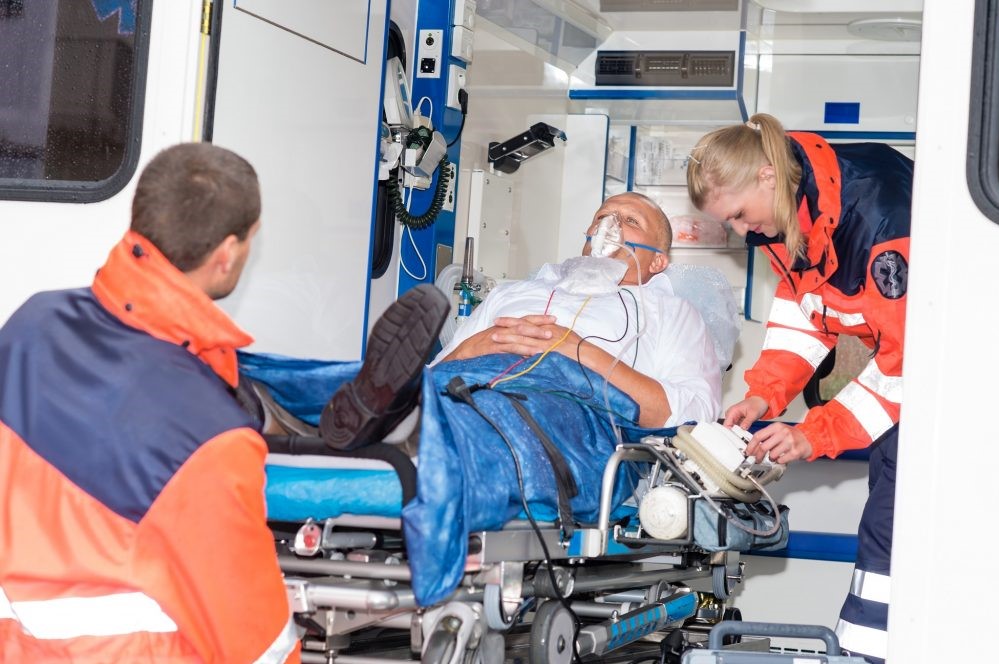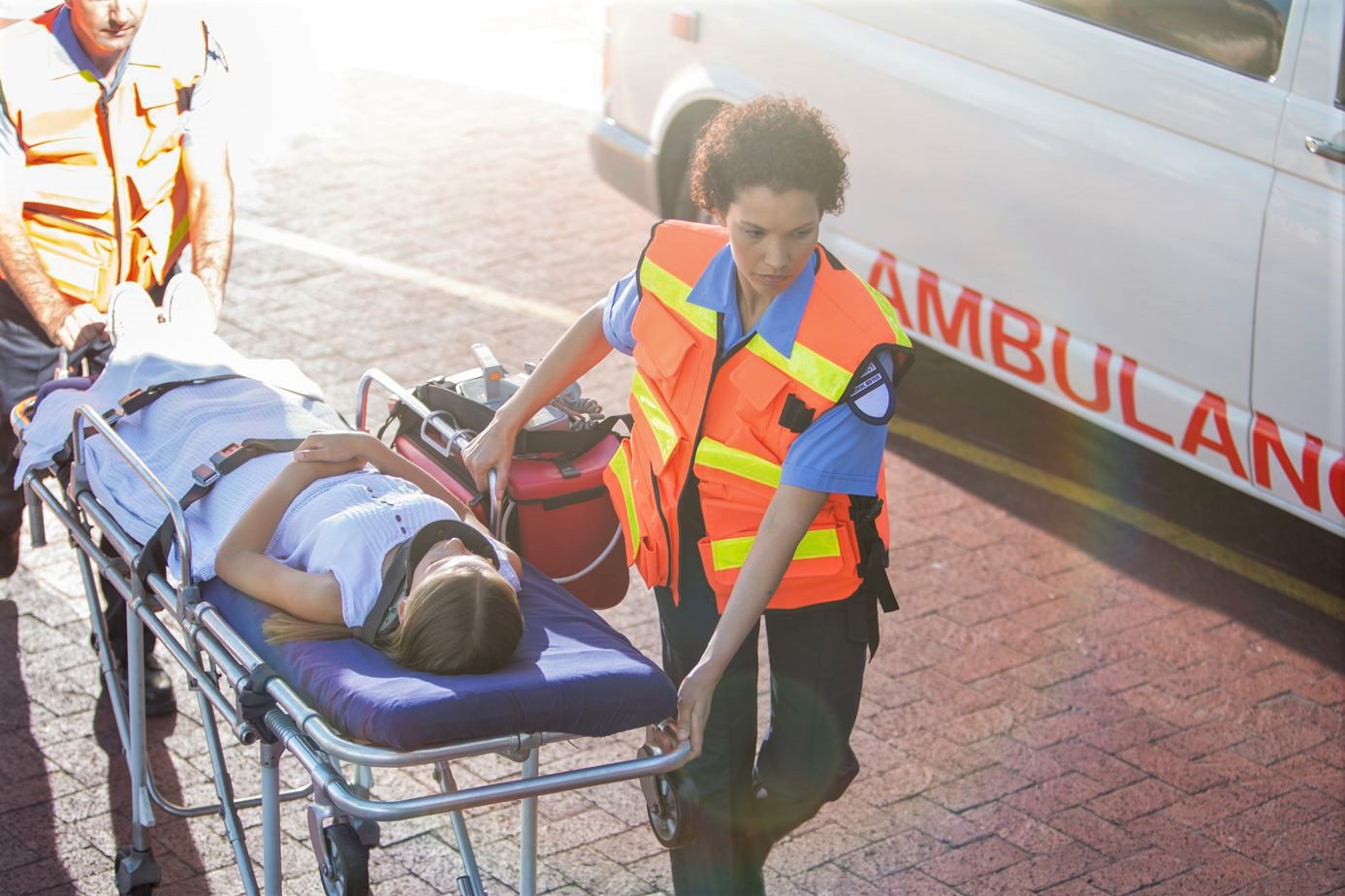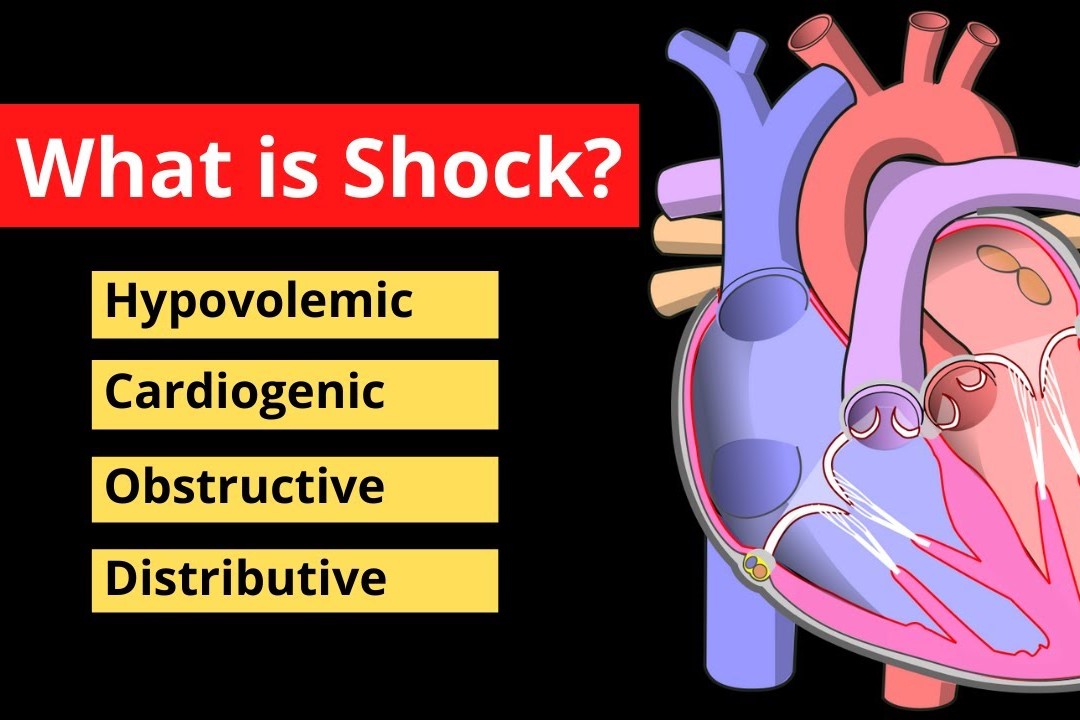
The quick and dirty guide to shock: differences between compensated, decompensated and irreversible
Any time a patient dies, shock is involved. Shock is the loss of sufficient circulation to support the vital organs. The foundation of all types of shock is hypotension which results in hypoxia
This hypotension can result from the failure of any part of the circulatory system, and the resulting failure can be categorized in different ways depending on its severity.
The Types of Shock
The circulatory system is nothing more than a complex loop of fluid that is moved by a pump.
Shock will result if the pump, the tubing, or the fluid is damaged/lost.
TRAINING: VISIT THE BOOTH OF DMC DINAS MEDICAL CONSULTANTS IN EMERGENCY EXPO
![]() Each of these three types of shock have various causes
Each of these three types of shock have various causes
Failure of the pump (heart) is known as “Cardiogenic Shock” there are many ways that the heart can fail, but the most common and highly tested presentation is that of congestive heart failure (CHF).
CHF is a chronic decrease in the heart’s output due to damage to the muscle cells.
Patients in cardiogenic shock will have cool/clammy/pale skin and swelling in their lower extremities and may have low oxygen saturation if their condition is severe.
Failure of the tubing (blood vessels) takes three primary forms:
Anaphylactic shock where an allergen causes a massive allergic response; neurogenic shock where damage to the spinal cord prevents nerve signals from reaching the blood vessels; and sepsis where microbes in the bloodstream cause an overreaction of the immune system.
Anaphylactic shock occurs when the white blood cells release a massive amount of chemical messengers that make blood vessels vasodilate and leak fluid into the tissues inappropriately.
These patients will have hot/red skin, potentially with a rash, tachycardia, and may have swelling of the face/lips.
They may experience difficulty breathing and/or airway compromise from this swelling.
Neurogenic shock occurs when a spinal injury high in the neck cuts off the body from the sympathetic nervous system, this prevents the blood vessels from vasoconstricting and the heart from increasing its rate.
These patients will be bradycardic or have a normal heart rate despite being hypotensive.
Physical paralysis of the legs and arms is almost always present.
Sepsis is the most common cause of “container failure,” microbes in the bloodstream stimulate an aggressive immune response and if they are present in large numbers this can result in leakage of the blood vessels and vasodilation in a reaction similar to anaphylaxis.
These patients will have hot/red skin and tachycardia, they usually have symptoms such as chills, fever, and diaphoresis.
Loss of fluid (blood) is the final cause of shock, known as “Hypovolemic Shock”
Blood can be lost in many ways, whether due to trauma or chronic/acute bleeding into the intestines being the most common causes in the EMS setting.
These patients generally have cool/pale/clammy skin and are tachycardic.
They often have a history of bleeding or a recent traumatic injury.
The Categories of Shock
Shock of any type can be placed into one of three categories, compensated, decompensated, or irreversible based on the signs and symptoms the patient is experiencing.
Compensated shock occurs when the dysfunction of the heart, blood vessels, or blood volume can be covered by one of the other systems.
The heart does this by increasing the rate at which it pumps blood and the blood vessels can clamp down (vasoconstriction) and increase the amount of pressure that reaches the organs.
The signs of compensated shock are an elevated heart rate, systolic blood pressure over 90, and normal mental status
Compensated shock may have no symptoms, some patients may feel palpitations, shortness of breath, fatigue, or other nonspecific/vague symptoms.
Decompensated shock occurs when the other systems of the body can no longer completely cover for the malfunctioning system, this usually occurs gradually as the damaged system slowly loses function or the system that is covering for the malfunctioning system begins to “wear out.”
Hypotension is the key sign of decompensated shock, shock is not decompensated until hypotension or organ dysfunction is present, in the EMS setting altered mental status is the best indicator of organ dysfunction.
The symptoms of decompensated shock are confusion, sweating, chills, vision changes, and extreme sleepiness/fatigue.
Irreversible shock occurs when death is imminent, the patient will usually be unconscious, hypotension may be severe, and the heart rate may begin to decrease if tachycardia was previously present.
TRAINING: VISIT THE BOOTH OF DMC DINAS MEDICAL CONSULTANTS IN EMERGENCY EXPO
The Treatment of Shock
The EMT treatment of all types/categories of shock is focused around the ABCs.
The airway is usually compromised later in the course of shock as they decompensate and develop altered mental status, this can result in the compromise of breathing as well and these patients may require positive pressure ventilation and an airway adjunct.
Neurogenic shock is the rare case where compromise of Breathing may develop first due to paralysis of the respiratory muscles.
The treatment of compromised circulation is central in shock, the majority of patients in shock require IV fluids to slow or prevent them from progressing to decompensated or irreversible shock.
Septic shock and hypovolemic shock always require IV fluids, neurogenic and anaphylactic shock sometimes require IV fluids, and patients in cardiogenic shock should never be given IV fluids.
Anaphylactic and neurogenic shock have special treatments available; anaphylaxis is managed with epinephrine, an “Epi-Pen” is a 0.3mg dose of 1mg/ml epinephrine and is the most common EMS treatment for anaphylaxis, these patients may require repeat doses of epinephrine if they continue to decompensate.
Neurogenic shock is also managed with epinephrine in addition to IV fluids if hypotension is present.
Read Also:
Emergency Live Even More…Live: Download The New Free App Of Your Newspaper For IOS And Android
Compensated, Decompensated And Irreversible Shock: What They Are And What They Determine
Drowning Resuscitation For Surfers
First Aid: When And How To Perform The Heimlich Maneuver / VIDEO
First Aid, The Five Fears Of CPR Response
Perform First Aid On A Toddler: What Differences With The Adult?
Heimlich Maneuver: Find Out What It Is And How To Do It
Chest Trauma: Clinical Aspects, Therapy, Airway And Ventilatory Assistance
Internal Haemorrhage: Definition, Causes, Symptoms, Diagnosis, Severity, Treatment
How To Carry Out Primary Survey Using The DRABC In First Aid
Heimlich Maneuver: Find Out What It Is And How To Do It
What Should Be In A Paediatric First Aid Kit
Poison Mushroom Poisoning: What To Do? How Does Poisoning Manifest Itself?
Hydrocarbon Poisoning: Symptoms, Diagnosis And Treatment
First Aid: What To Do After Swallowing Or Spilling Bleach On Your Skin
Signs And Symptoms Of Shock: How And When To Intervene
Wasp Sting And Anaphylactic Shock: What To Do Before The Ambulance Arrives?
Spinal Shock: Causes, Symptoms, Risks, Diagnosis, Treatment, Prognosis, Death
Cervical Collar In Trauma Patients In Emergency Medicine: When To Use It, Why It Is Important
KED Extrication Device For Trauma Extraction: What It Is And How To Use It
Introduction To Advanced First Aid Training




